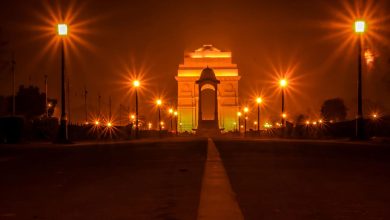Lotus Temple, inspired by Bahá’í Faith invites you to the world of tranquillity.
“Every created thing in the whole universe is but a door leading into His knowledge…” – Bahá’í Writings.
A spectacular architectural marvel resides in the heart of Delhi. Lotus Temple is a popular tourist attraction as well as the House of Worship. Known for its awe-inspiring construction and beauty, the Lotus Temple spreads a bigger message. It is one of the Houses of Worship.
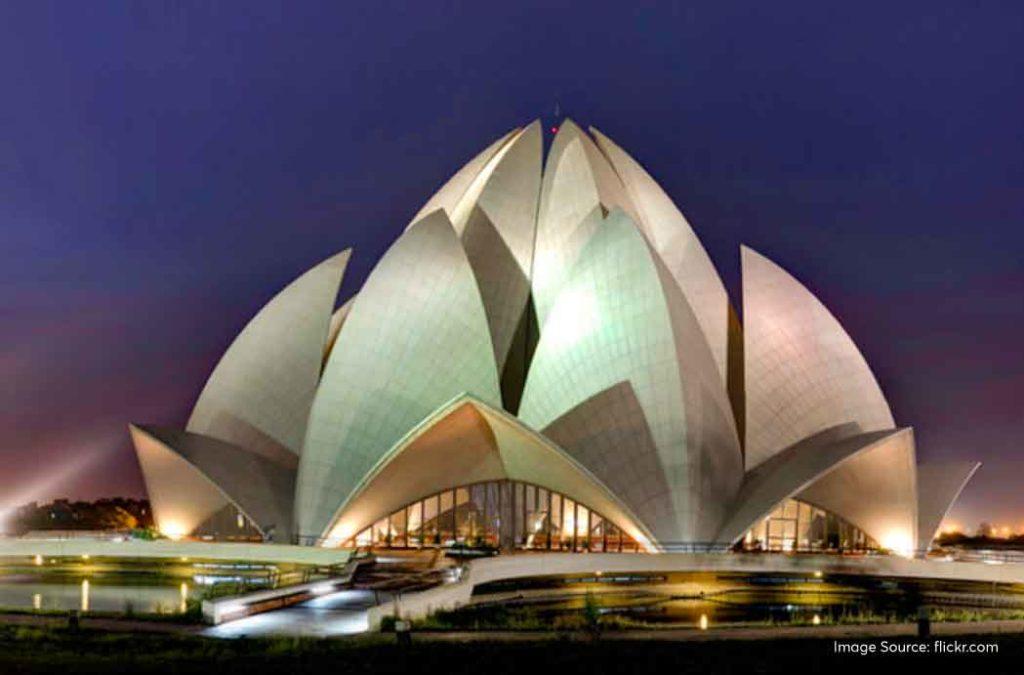
As you enter the huge space, you can witness lush greenery and a peaceful atmosphere. With an iconic petal structure, Delhi elevates your stay simply with a visit here. Wondering where to stay during your trip? Check out the best hotels in Delhi.
In the Bahá’í Faith, the Lotus Temple of Delhi holds immense significance. It is one of the prominent places of worship where you can embrace spiritual unity. The Bahá’í Faith promotes world peace and invites people from all backgrounds. You can witness the oneness of humanity as people worship the one and only creator of the universe.
[treebo_visual_elements header=”Book Budget Hotels in Delhi” city=”Delhi”]
Inspiration and design of Lotus Temple by Fariborz Sahba
Lotus Temple will awestruck you with its magical architecture. The design, elements and every thought behind the creation sparkles creativity. Fariborz Sahba is the architect of this famous structure. Considering the features of nature and spirituality, Fariborz Sahba blended the best of elements seamlessly. Innovative engineering made it possible to build this structure.
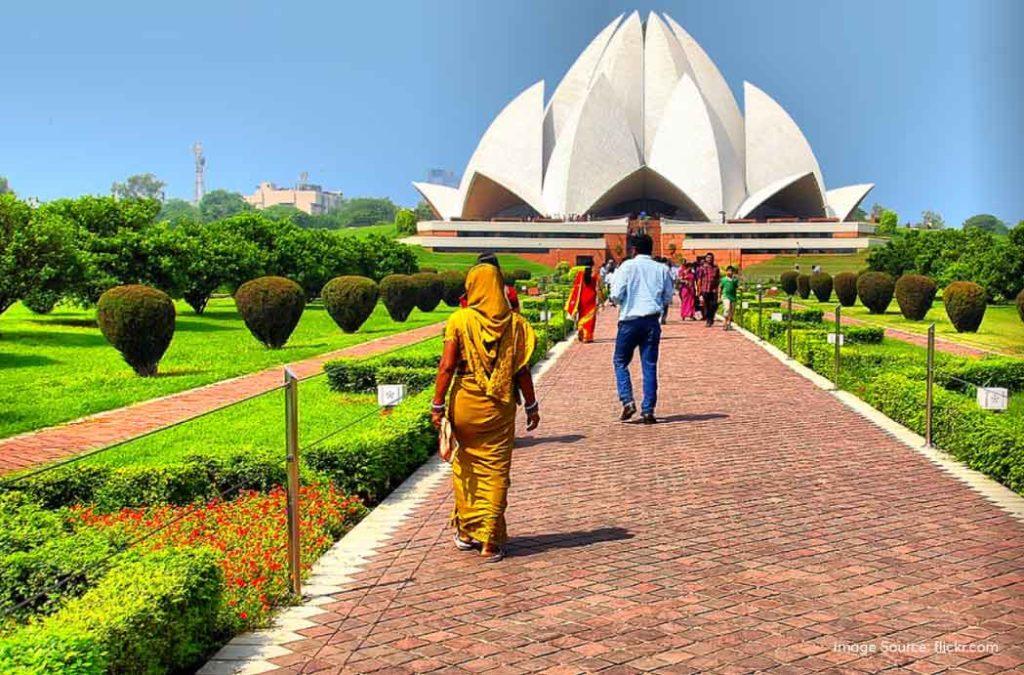
Before constructing the temple, Fariborz Sahba had extensively travelled in India. He was awestruck by the architectural beauty and creativity of temples in India. Concepts of universal peace and oneness were also inspirations for Fariborz Sahba. Apart from this, the homeland of the architect, Iran, also draws inspiration for the Lotus Temple. The usage of white marble with a fusion of Persian influence makes the temple one of the iconic structures in Delhi.
The very first look of the temple itself signifies the shape of a lotus flower. Wondering what is the conceptualization of this structure? 27 free-standing marble clads are used to form this shape.
As the Lotus Flower holds immense importance in different cultures, the shape signifies the unity of different people from all walks of life. You can witness each petal symbolising harmony, purity and oneness. Just as lotus grows in muddy water yet blooms brightly, it stands as a beacon of hope and sunshine in lives.
Construction materials and techniques
While you must adore the Lotus Temple for its awe-inspiring construction, know that every process is thoughtful. Pentelikon marbles are known for their beauty and shine. They were cut in different shapes in Italy and imported to India for construction.
Observe the petals of the lotus and you can notice the finely-cut Greek marble showcasing its wonders. The luxurious white marble which is also expensive was used to depict purity. Such a colour and texture also add tranquillity to the atmosphere!
You must be astonished to know that this temple has 27 marble petals! Yes, there are 3 different sets of petals. The outermost petals are made as openings to the 9 different gateways. The next set of 9 is known as the outer leaves, facing inwards. The last set of 9 which is the centre-most part is the inner leaves. That’s how 27 marble petals form the structure of a lotus!
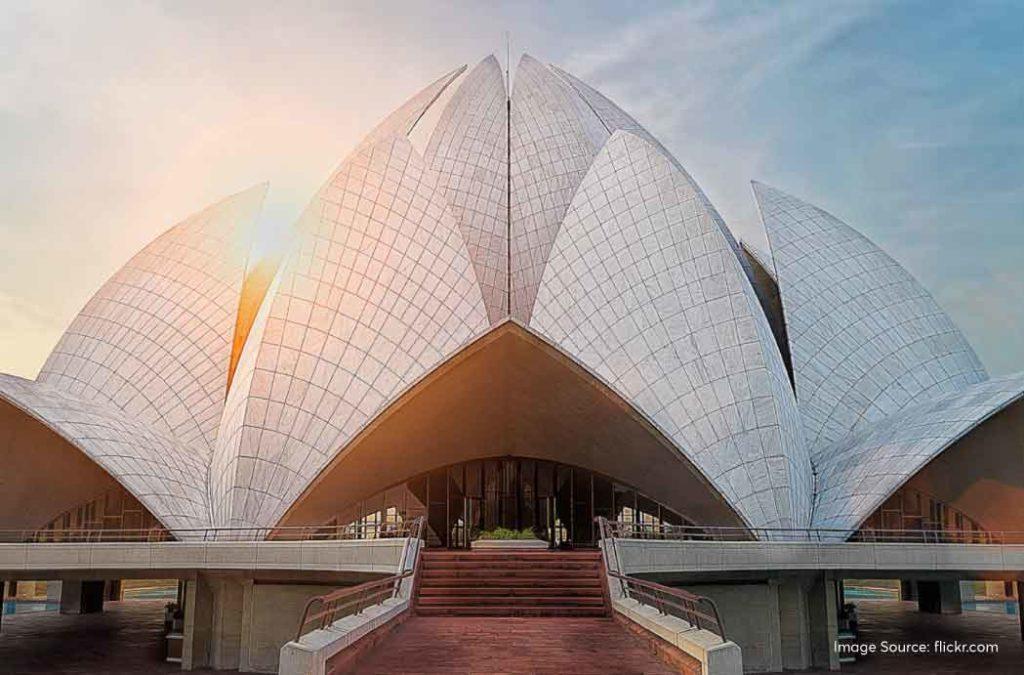
Just as there are 9 openings to the temple, there are 9 different pools built outside each opening. You can enter the temple through the walkways created around the pools. The pools are created to replicate the actual environment where the lotus grows!
Environmental considerations
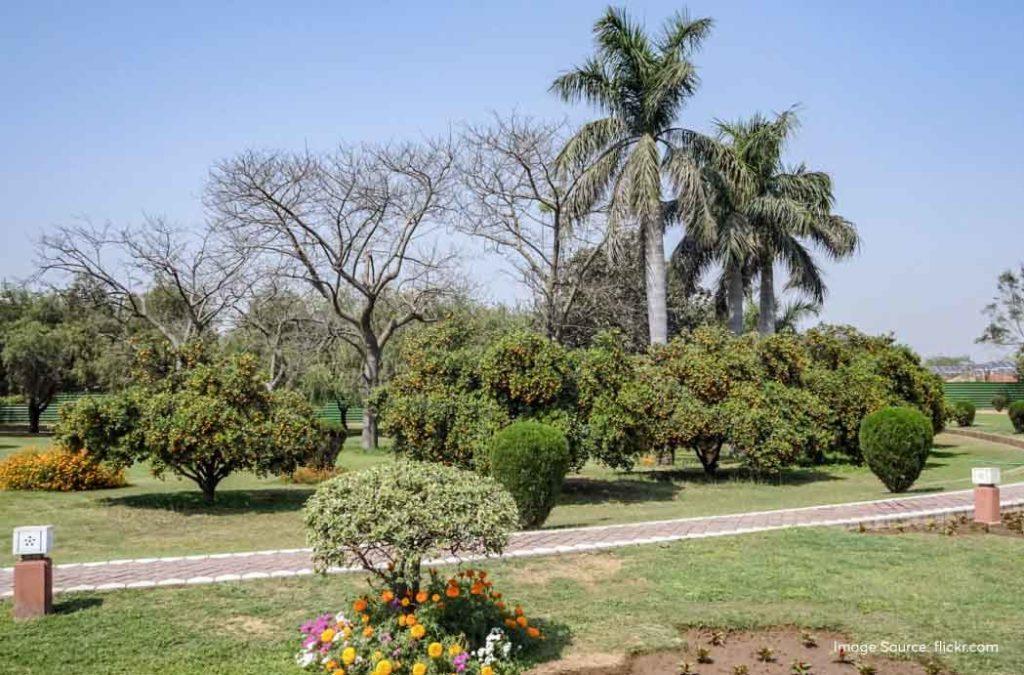
While you admire its beauty, let’s understand the importance of its construction in the environment. The set of 27 lotus petals has gaps between the two sets. This allows natural lighting and ventilation to keep the temple cool. Even when it is hot outside, the 9 pools play a vital role in maintaining a pleasant atmosphere. Various exhaust fans prevent extreme heat from entering the dome.
Lotus Temple is one of the first tourist sites in Delhi to install net metres for solar power generation. It is done to create an impact on the environment and utilise the natural resources in their best capacity. There are 400 photo-voltaic panels, each generating 250 KW. The electricity is used for cooking and lighting. The smart move saves electricity and also inspires other tourist sites to adapt to solar power.
Historical context of the Lotus Temple
- In 1976, Fariborz Sahba was approached to design the House of Worship which is now known as the Lotus Temple.
- British firm Flint and Neill was responsible for the structural design. Larsen and Toubro’s ECC Construction Group was responsible for the construction of this place.
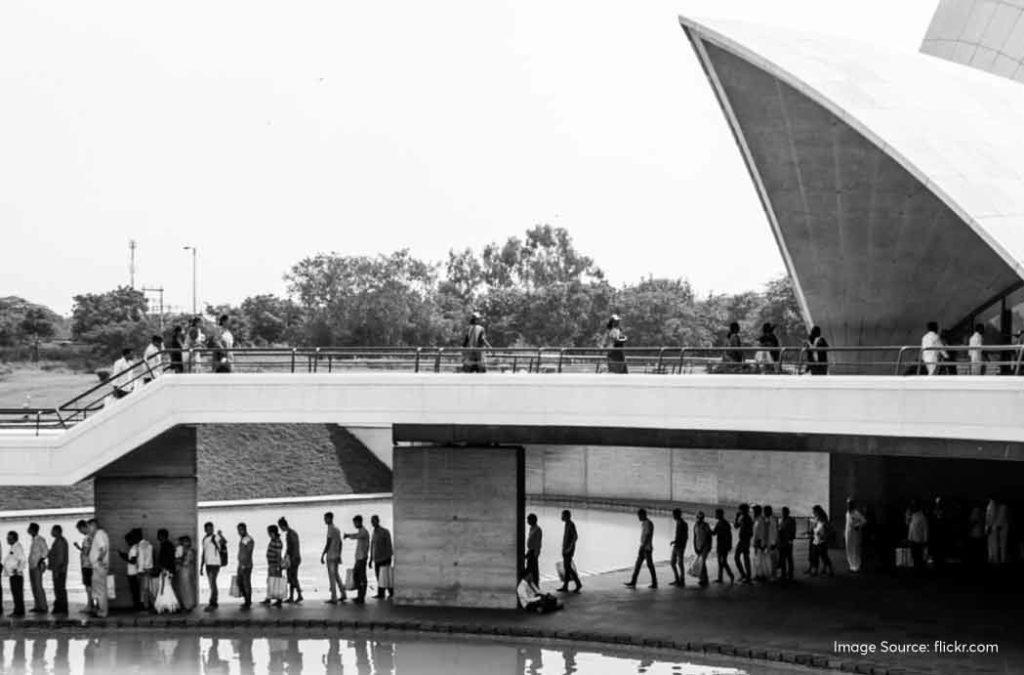
- The foundation stone was laid on 19th October 1977 by Rúhíyyih Khánum.
- The construction was completed on 13th November 1986 while it was opened on 24th December 1986.
- It was officially opened to the public on 1st January 1987.
Imagine someone donating their entire life savings to build a temple. That’s exactly the case with Lotus Temple. Ardishír Rustampúr was a resident of Hyderabad (now Pakistan). He was a believer in Bahá’í Principles and a firm practitioner. With his love and faith, he donated his savings of life for the completion of the Lotus Temple in 1953.
Lotus Temple was dedicated on 24th December 1986 remarking its glory. That’s when 8000 Bahá’ís visited the place for the grand gathering. It involved visitors from 107 different countries. Apart from this, 4000 Bahá’ís marked their presence from 22 different Indian states. On 1st January 1987, more than 10,000 individuals visited the temple.
The Lotus Temple as a symbol of peace, purity and unity
A temple so divine that it attracts you to reaffirm your beliefs. Lotus Temple is a House of Worship built for everyone, from all backgrounds. It stands as a testament to undying humanity and unity among people. The soothing interiors are all about pure vibes and a calming atmosphere.
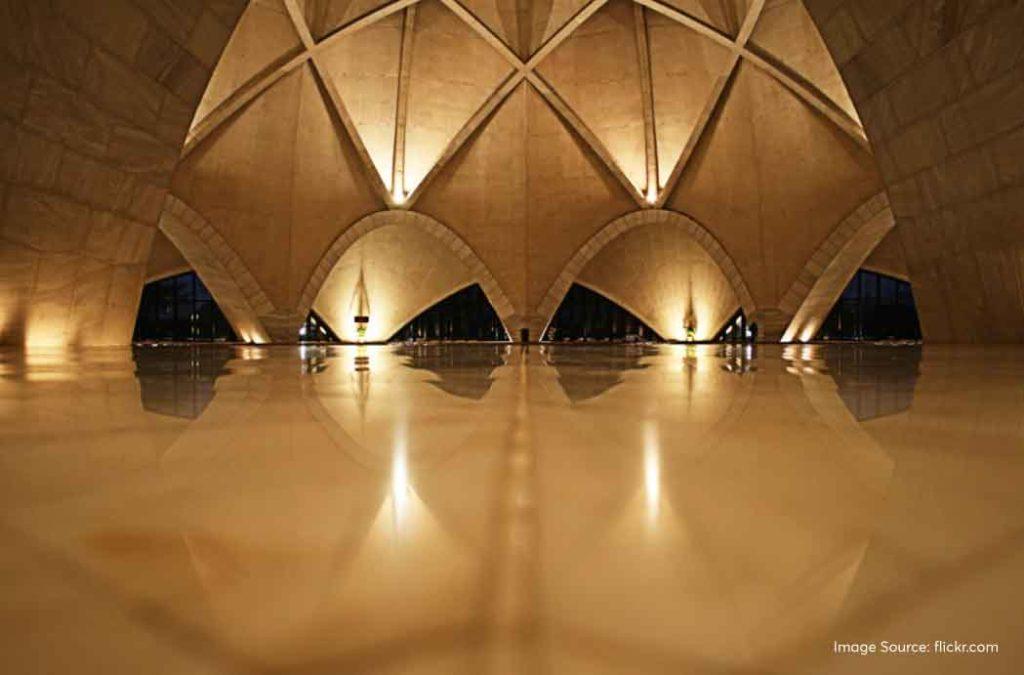
Additionally, there are no idols, photographs or statues of any specific religion or belief. Go, pray to the creator, meditate and learn about serving humankind, that’s all. There’s nothing beyond coming together as people to serve the universe!
The principle of worship here is simple! There are no religious ceremonies and reading of non-scriptural texts is permitted. No matter where you belong, you can pray, meditate and offer services in the name of your universal creator.
While communities chant different prayers of the Bahá’í Faith, you can chant any prayer. The purpose of the principle is to offer prayers to the creator of the universe. May it be anyone in your life, you can always visit the temple for self-reflection and connecting with god.
While you visit many places of worship dedicated to different religions, Lotus Temple is different. Interfaith harmony believes in the concept of live and let live. The temple plays a significant role in promoting the message with its magnificent structure. People from any religion, caste or creed can offer their services in the temple. National as well as international tourists, no matter their background, are allowed to pray and meditate in this mesmerising structure.
It is because the Bahá’í Faith is all about one creator. It is also believed that the sole creator sent many other creators in the form of avatars. That’s exactly why you are free to worship, meditate, visit or be a part of activities in this House of Worship.
The Central Prayer Hall

The central prayer hall is one of the main attractions in the Lotus Temple. With a seating capacity of 1300 individuals, it is a place for meditating and worshipping the creator. A serene environment creates the perfect atmosphere for people of all kinds.
Awards and recognitions
In 1987, Fariborz Sahba received an award from the UK-based Institution of Structural Engineers for his excellence in religious art architecture.
In 1987, Fariborz Sahba again received an award for his excellence in religious art architecture from the Interfaith Forum on Religion, Art and Architecture, Affiliate of the American Institute of Architects, Washington, D.C.
In 1988, the temple was conferred as the “Taj Mahal of the Twentieth Century” and received the Paul Waterbury Special Citation for Outdoor Lighting from the Illuminating Engineering Society of North America.
The American Concrete Institute’s Maharashtra-India Chapter presented the Temple with an award in 1989 for “Excellence in a Concrete Structure.”
The temple was recognized as a notable historical accomplishment in the “Architecture” section of the Encyclopaedia Britannica, 1994 edition.
2000 witnessed the Architectural Society of China listed in “World Architecture 1900-2000: A Critical Mosaic, Volume Eight, South Asia” as one of the 100 canonical works of the 20th century.
In 2000, GlobArt Academy, based in Vienna, Austria, presented the GlobArt Academy 2000 award to the architect, Fariborz Sahba, for “the magnitude of the service of [this] Taj Mahal of the 20th century in promoting the unity and harmony of people of all nations, religions and social strata, to an extent unsurpassed by any other architectural monument worldwide.”
Apart from these awards, Lotus Temple has been a part of many publications and books out there. Baháʼí World Centre Library has more than 500 publications mentioning the architectural splendour of the Lotus Temple.
Visitor statistics and impact on tourism
The temple has a capacity of 1300 people in the prayer hall. As per statistics, the temple receives 10,000 visitors per day. It takes around 4 lakh visitors a year. The highest number of visitors in a day was 150,000. As the Lotus Temple attracts so many tourists and locals, it creates ample opportunities for tourism.
Due to the Lotus Temple, tourists indulge in various other activities and often check out other tourist attractions. It also creates a big market for sellers as tourists often walk through the local shopping streets to buy souvenirs. The hotel industry has been boosted with national and international bookings throughout the year.
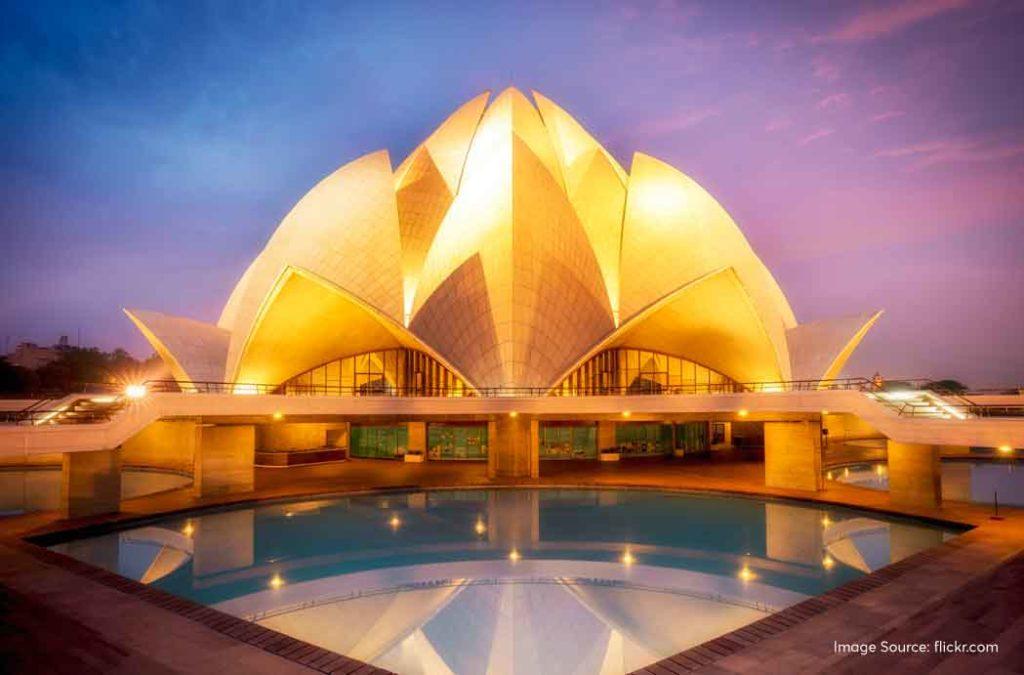
The youth of New Delhi is moving closer to the aspect of spirituality, inner peace and oneness. This is because Lotus Temple directly impacts thousands of visitors with its service-oriented purposes. You can now be a part of multiple educational initiatives and connect with the creator like never before!
The communities here conduct children’s classes to teach the values of empathy, honesty and service to humanity. At times, the youth engage in prayers and talks with the juniors. Such a relationship between individuals empowers self-expression and awareness.
Junior Youth Empowerment Program (JYEP) is a special program dedicated to youth aged between 11 to 14. They generally indulge in meaningful conversations. Children often find answers to various questions about self and life out there. Discussions, workshops and study circles encourage them to develop socially. In a way, it also embraces their leadership skills.
Lotus Temple opened a new facility, an education centre, in 2018. The centre created immense opportunities for learning, the exchange of ideas and spiritual growth. Various community-building activities are conducted here. It is indeed a flourishing moment when communities pray and meditate in the name of their creators. With no disparity among religions, individuals are taught to serve humankind. Camps, public talks and prayer meetings are generally held in the Lotus Temple.
Effects of Pollution on the Structure
Pollution is not only ruining human health but also the beauty of ionic structures. Lotus Temple is not new on the list! Just as the Taj Mahal is yellowing, the Greek marble of the Lotus Temple is majorly affected. It is believed that soon the marbles might turn grey due to emissions in the atmosphere.
Extreme traffic is the biggest cause of pollution. As per the study, it is observed that nearby slums indulge in burning rubber and plastic. This drastic move causes chemicals in the environment. Lastly, the Badarpur power plant is also responsible for immense fly ash and harmful gases impacting the magic of this temperature.
Be thrilled to know about the advancements in the temple leading to an environmental balance. There is a developed system which harvests rainwater for gardening purposes. With an excellent sewage system, the temple can treat wastewater too. Vermicomposting initiatives ensure rich compost which is used as a fertiliser.
Conclusion
With constant development, Lotus Temple gained immense popularity due to its powerful and thoughtful architecture. Even today, it stands as a testament to excellent engineering and modernism.
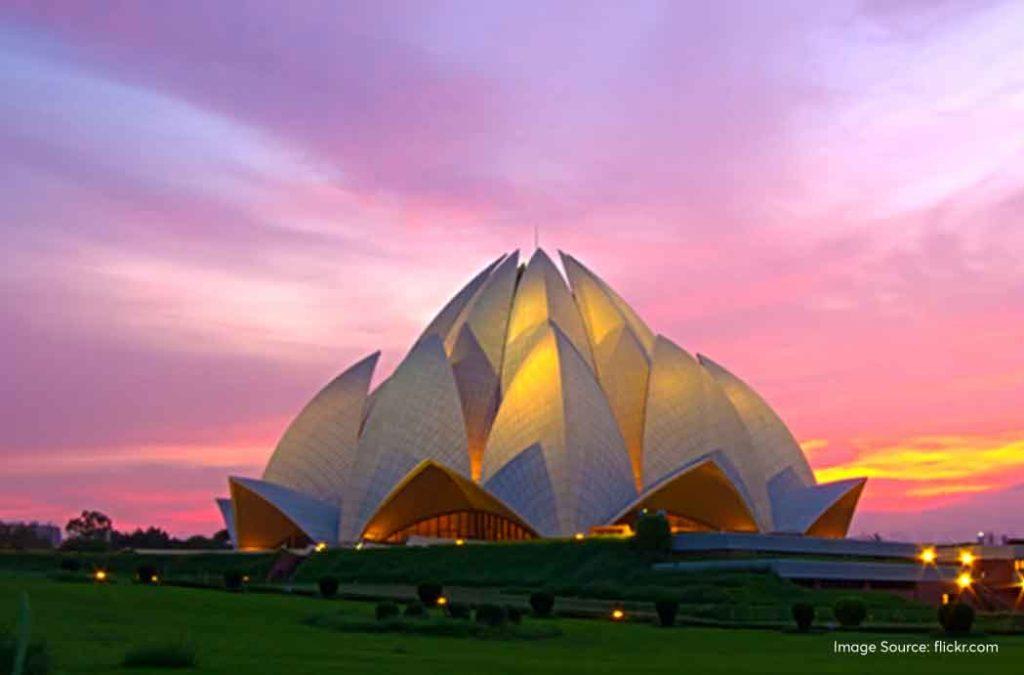
With several international acclaims and awards, it is an inspirational structure for the world out there! From environmental considerations to ancient techniques, the temple transcends innovation and creativity.
As Lotus Temple attracts thousands of visitors every year, many individuals engage in learning. It is the masterful concept of global peace that intrigues people. The temple plays a vital role in educating people about oneness and harmony. Get ready to witness abundant peace and the meaning of service in its true essence.
